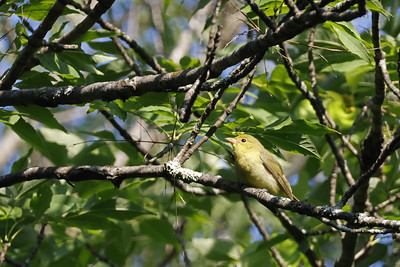The beginning of September has been fairly productive despite less than great migration conditions so far for the month. The shorebird extravaganza is over for now in the East Meadows with just a handful of individuals around of just three species. I have not been able to chase down much for rarities but I have been looking. The most noteworthy stuff so far include a Sora, multiple lingering Virginia Rails, several species of flycatchers (including Olive sided and Yellow bellied), my first Philadelphia Vireo of the year, multiple Red Crossbills and 19 species of warblers. We have a heat wave in the forecast for a good portion of the upcoming week and I don't think there will be any big influx of migrants until the weather conditions change to cooler temps and more northerly winds.
Although not an occurrence in the local area I think it worth mentioning a very unique avian incursion into the US following Hurricane Idalia. The storm hit the big bend area of Florida on August as a very strong Cat 3 hurricane and then continued across southern Georgia and the coast of the Carolinas. Storm typically bring some unusual species due to entrainment or displacement. There were certainly reports of some expected species (like Sooty Tern and Bridled Tern) but the big story by far was the incredible arrival of multiple American Flamingos first into areas of Florida (with double digit counts in spots) and then reports from further afield. Some of the amazing records have included a flock of 11 on the outer banks of North Carolina, three in central Alabama, one in southern Tennessee and even two in southwest Ohio! I suspect there will be more reports over the next several days (maybe here?). It appears these birds came from the Yucatan population in Mexico. Idalia really started getting organized in the Yucatan channel and stayed there for an extended period before rapidly moving off to the north and then northeast with rapidly increasing winds. I'm sure more will be written about this in the future and it will be interesting to see the overall total number of individuals involved.











No comments:
Post a Comment